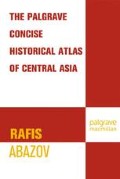Abstract
The establishment of the Turkic empires and later of the Islamic caliphate rejuvenated the Great Silk Road. The Turkic empires controlled the territory between China and Maveranahr and Khorasan from the sixth to mid-seventh centuries, and the Islamic caliphate dominated the land between Maveranahr and the Mediterranean from the mid-seventh to early ninth centuries. Rising living standards among the ruling elite and urban populations generated a growing demand for imported goods and thus boosted both regional and international trade. Craftsmen, farmers and herders became increasingly involved in the commercial production of goods to be sold in the large bazaars in Balasagun, Samarqand, Merv, Herat and Baghdad.
Access this chapter
Tax calculation will be finalised at checkout
Purchases are for personal use only
Copyright information
© 2008 Rafis Abazov
About this chapter
Cite this chapter
Abazov, R. (2008). International and Major Trade Routes in Central Asia. In: The Palgrave Concise Historical Atlas of Central Asia. Palgrave Macmillan, New York. https://doi.org/10.1057/9780230610903_21
Download citation
DOI: https://doi.org/10.1057/9780230610903_21
Publisher Name: Palgrave Macmillan, New York
Print ISBN: 978-1-4039-7542-3
Online ISBN: 978-0-230-61090-3
eBook Packages: Palgrave History CollectionHistory (R0)

